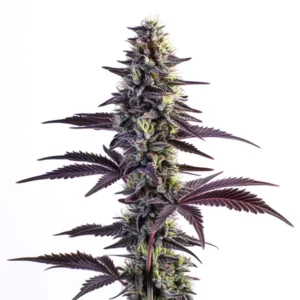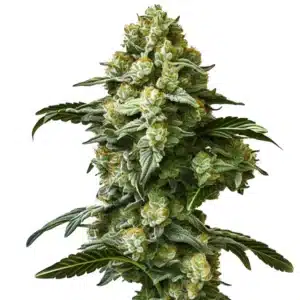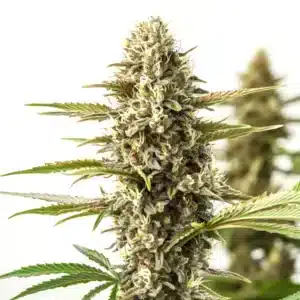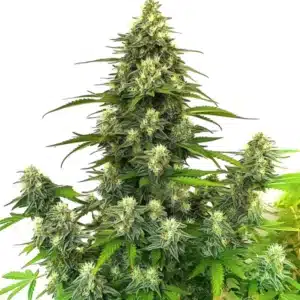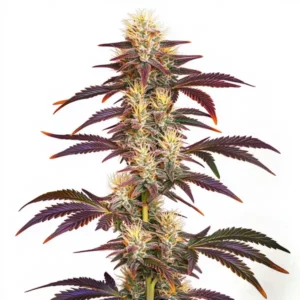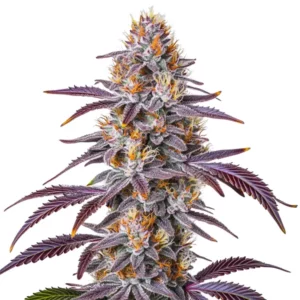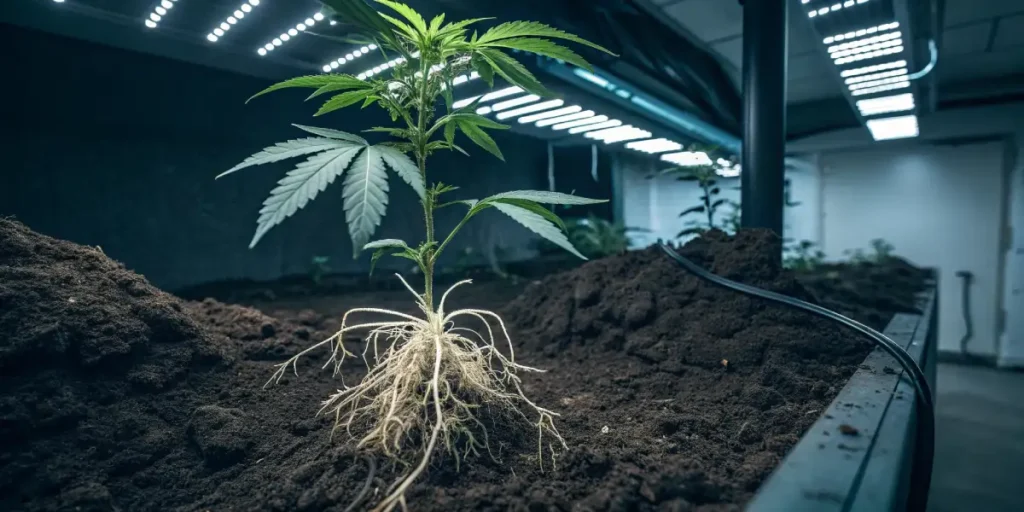
The Pro-Grower’s Gambit: Knowing “Microcloning”
Let’s talk about a technique that gets a lot of growers excited and confused: cloning from cuttings with almost no top growth. First, let’s clear the air. You can’t clone a piece of stem with literally zero leaves. The plant needs some way to photosynthesize to survive.
What people are really talking about is a technique called microcloning. And it’s a high-risk, high-reward game played by growers who need to maximize every single square inch of their nursery space. This isn’t your everyday cloning method; it’s an advanced strategy.
Recommended Strains
Blue Grape Fuel
|
|
THC | 24% - 26% (High) |
|
|
Type | Feminized |
|
|
Yield | High |
|
|
Phenotype | 50% Indica / 50% Sativa |
CBD Grape Pie (1:15)
|
|
CBD | 10% – 12% (Medium) |
|
|
Type | CBD Feminized |
|
|
Yield | Medium |
|
|
Phenotype | 45% Indica / 55% Sativa |
Why Bother? The Strategy Behind the Struggle
So, why would anyone attempt this difficult method? The answer is one word: space.
If you’re a large-scale grower and you need to produce hundreds of clones in a tiny area, you can’t afford to take large, leafy top cuttings. Microcloning allows you to take one single branch and chop it up into dozens of tiny, potential new plants. You’re trading a high success rate for massive space efficiency.
Promos & Deals
The Brutal Rules of Microcloning
If you want to play this game, you have to know the rules. And the rules are tough.
Rule #1: Plan for Heavy Losses. This is the most important rule. The mortality rate for microcloning is HUGE. These tiny cuttings are incredibly fragile. So, if you need 20 healthy plants, you should aim to make 40, 50, or even more micro-clones. You absolutely must play the numbers game to win.
Rule #2: This is a Marathon, Not a Sprint. Patience is not a virtue here; it’s a strict requirement. A normal clone might root in 15-20 days. A micro-clone, with almost no stored energy, can easily take well over a month to show roots. You are signing up for a very long wait.
Rule #3: Life Support Must Be Perfect. These tiny cuttings have almost no ability to retain water. Their life-support system must be flawless. This means a humidity dome with over 80% humidity is non-negotiable. And absolutely zero wind or direct airflow. A draft can kill them in minutes. They need a perfectly still, swampy environment to survive.
The cuttings themselves can be taken from almost anywhere on a mother plant in its vegetative stage, even bits of stem without a full leaf set. But the less energy a cutting starts with, the lower its chance of survival. It’s a technique that pushes the plant’s will to Thrive to its absolute limit. To even attempt this, you need a mother plant with insane vigor, like a Grape Ape or a Blue Dream, just to have a fighting chance. This is the ultimate challenge to Nurture new life from the bare minimum.

Frequently Asked Questions
What is cannabis microcloning, really?
Microcloning is an advanced technique where you take very small cuttings from a mother plant, often just a small piece of stem with a single node, to create a new plant. It’s used almost exclusively by growers who need to produce a very large number of clones in a very small amount of space.
Why would anyone use this difficult cloning method?
The only real advantage is space efficiency. You can create significantly more clones from a single mother plant than with traditional methods, which is useful for large-scale operations. It is not recommended for the average home grower, as the difficulty and failure rate are very high.
What is the success rate for microcloning?
It’s much lower than traditional cloning. You should expect a high mortality rate. A good strategy is to make at least double the number of clones you actually need, as it’s very likely that a large percentage of them will not survive the difficult rooting process.
How long does microcloning take compared to normal cloning?
It takes significantly longer. While a normal clone might root in 2-3 weeks, a micro-clone has very little stored energy and can easily take over a month, sometimes even longer, to develop a viable root system. This method requires extreme patience.


